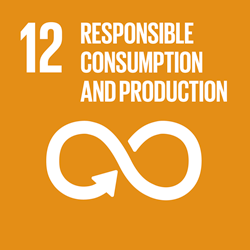Technological watch
Removal of Cr(VI) from water by in natura and magnetic nanomodified hydroponic lettuce roots
Biosorption is a viable and environmentally friendly process to remove pollutants and species of commercial interest. Biological materials are employed as adsorbents for the retention, removal, or recovery of potentially toxic metals from aqueous matrices. Hexavalent chromium is a potential contaminant commonly used in galvanoplasty and exhibits concerning effects on humans and the environment. The present work used in natura lettuce root (LR) and nanomodified lettuce root (LR-NP) for Cr(VI) adsorption from water medium. The nanomodification was performed by coprecipitation of magnetite nanoparticles on LR. All materials were morphologically and chemically characterized. The conditions used in removing Cr(VI) were determined by evaluating the pH at the point of zero charge (pHPZC?=?5.96 and 6.50 for LR and LR-NP, respectively), pH, kinetics, and sorption capacity in batch procedures. The maximum sorption capacity of these materials was reached at pH 1.0 and 30 min of adsorbent-adsorbate contact time. The pseudo-second-order kinetic equation provided the best adjustments with r2 0.9982 and 0.9812 for LR and LR-NP, respectively. Experimental sorption capacity (Qexp) results were 4.51?±?0.04 mg/g, 2.48?±?0.57 mg/g, and 3.84?±?0.08 mg/g for LR, NP, and LR-NP, respectively, at a 10 g/L adsorbent dose. Six isothermal models (Langmuir, Freundlich, Sips, Temkin, DR, and Hill) fit the experimental data to describe the adsorption process. Freundlich best fit the experimental data suggesting physisorption. Despite showing slightly lower Qexp than LR, LR-NP provides a feasible manner to remove the Cr(VI)-containing biosorbent from the medium after sorption given its magnetic characteristic.






